There’s a lot to look forward to in the wacky, exaggerated and yet disturbingly plausible space simulator that is The Outer Worlds. From the wickedly ingenious minds of Tim Cain and Leonard Boyarsky, the creators of Fallout, the premise for a new and innovative RPG will likely be a welcome sight upon its release this August.
While the tone for The Outer Worlds certainly takes a leaf from Fallout’s ludicrously decrepit book, Obsidian Entertainment have shown they are not afraid to venture beyond the unknown and discover new ways to expand the universe of the RPG genre.
Here are just a few ways they plan to do it.
Dogmatic Corporal Rule — But in Space

If insightful social commentary and darkly humorous criticism on a society that perturbingly resembles our own doesn’t win you over, then surely the fact that it is set in space will.
Your journey begins when you are pulled from stasis aboard a ship headed to the colony planets of Halcyon, 70 years after it was intended to reach its destination.
The crazed scientist responsible from waking you up, Dr Phineas Wells, quickly helps you acclimatise to the unsettling environment of outer space, before enlisting your help in bringing down the crushing corporal rule over the so-called ‘utopia’.
From the get-go, elements of the satirical society of Fallout are littered throughout the Halcyon System. What’s truly enticing, however, is how this alien setting (literally) varies so widely in its environment, activities and locations. While there are only two major planets to actively explore, Obsidian promises an extensive list of side quests and other unique interactions to keep players occupied. From Terra 2, the capital of consumerism that is home to the feignedly prosperous regions of Edgewater and Roseway, to the Monarch, a strange planet of weird and discernibly large wildlife.
There’s also plenty to see at the Groundbreaker, a space station built entirely around an abandoned colony ship, and let’s not forget the inhospitable maximum-security prison in Tartarus.
There is plenty awaiting you the minute you step off your ship, only time will tell if the freedom to explore is as exciting as it sounds.
Space is Vast, But Not Open-World
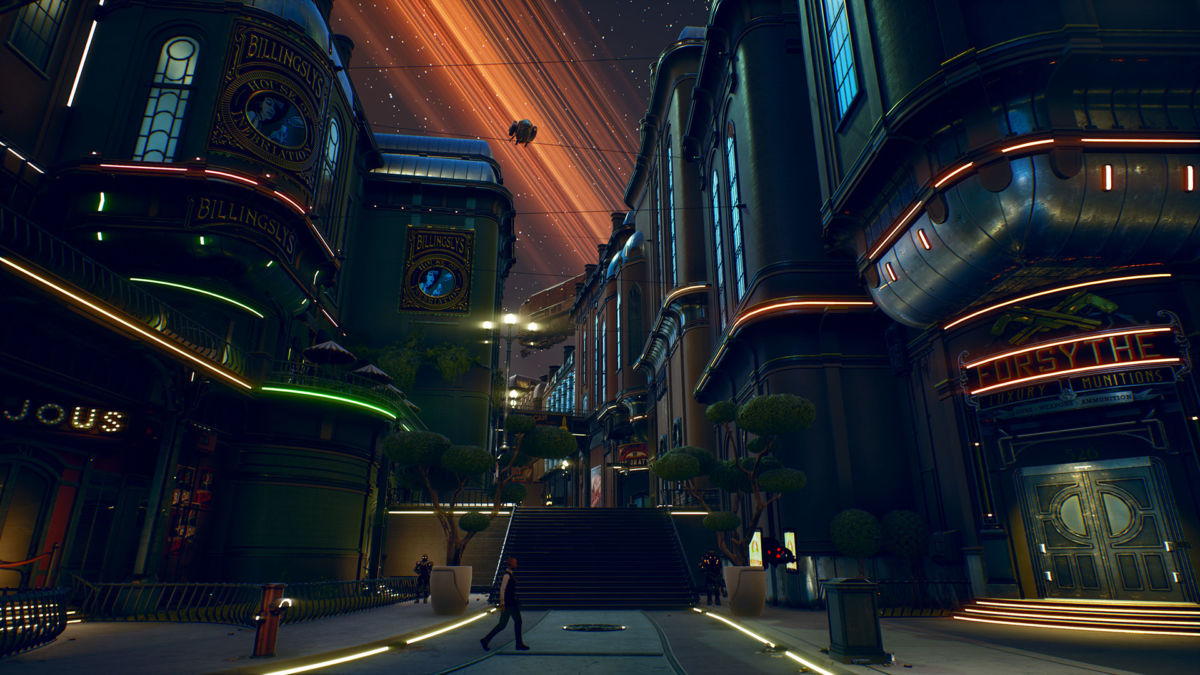
Another surprising change includes how The Outer Worlds will not feature a continuous open-world. Instead, you will explore the Halcyon System by traversing separate towns and regions, each identifiable by their own maps.
Whether you feel this may cap and therefore hinder your freedom to explore, or is a breath of fresh air that strays from the overwhelmingly large regions that have been a recent trend of RPGs, the developers of Fallout: New Vegas still intend to make the very most of a world smaller than what we are used to exploring.
While the number of places you can visit is limited, that certainly doesn’t suggest there will be less to do. Cain and Boyarski have ensured fans that this RPG will focus instead on being polished and tightly crafted, with more emphasis on player choice and making you feel more integrated within the world of your own unique playthrough.
Amidst a competitive market of games as time-consuming as they are numerous, the notion of a shorter RPG is certainly appealing. It’s about time the genre placed a greater focus on quality over quantity.
Philanthropist or Psychopath?
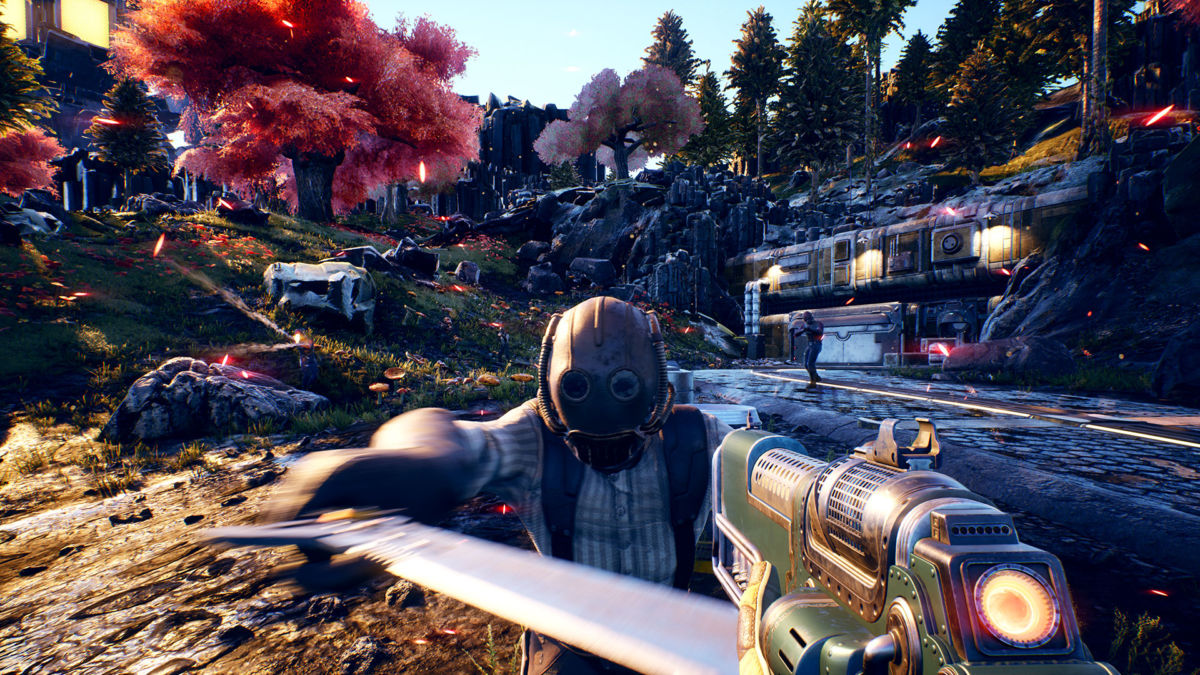
The space world is your oyster, so naturally, your first course of action is to massacre everyone between the Langrase Point and Roseway. We promise we won’t judge, but the game will.
Through the creative medium of the loading screen, The Outer Worlds actively responds to the nature of your conquest through each region by representing it in a series of propaganda-like slides.
Did you go ahead with that massacre? Your loading screen will display an illustration of a frightening beast trampling tiny and helpless citizens, with the caption; ‘Death and Destruction Stalk the Frontier.’
Or, did you locate a cache of medicine for a plague-ridden town within Emerald Vale? You’ll likely see a silhouetted image of your character enshrined in light, captioned: ‘Miracle on the Frontier.’
This is but one of the many details that fully realise a world shaped by your own choices and actions. Perhaps more will be revealed the further we delve into its fascinating world.
Playing Dumb
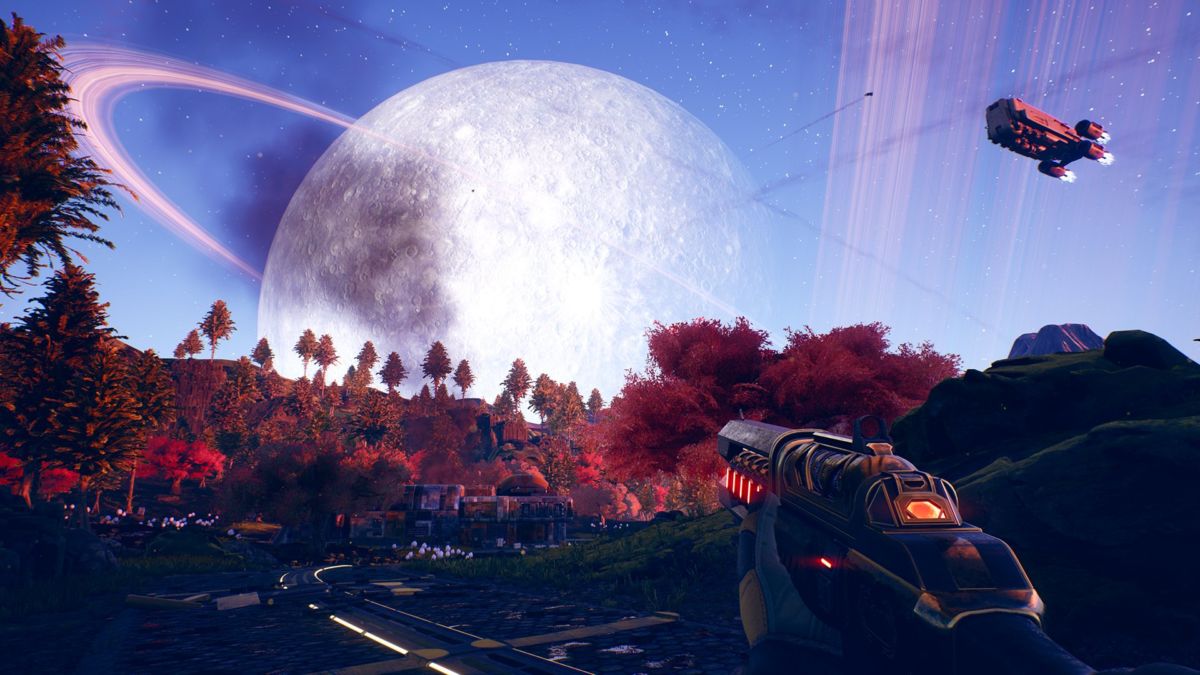
For those who have a tendency to completely disregard the intelligence attribute because you’re too busy beefing up your strength level (‘because really, that’s what this game is all about’), your character’s lack of brain power will essentially be rewarded with ‘Dumb’ dialogue options. And by the sound of that; it’ll definitely be a reward.
Or As a Leader of the Pack
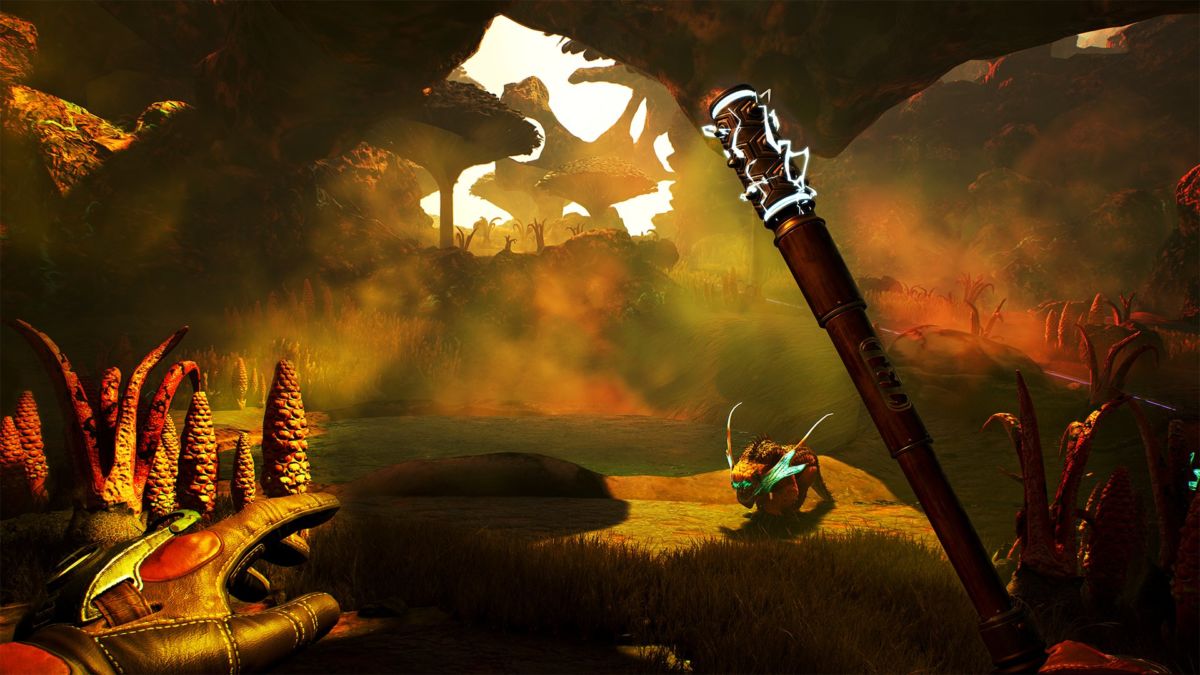
Nothing says ‘leadership’ more than enlisting the aid of companions to fight your battles for you. There’s no shame in it, in fact, harnessing their unique abilities to compliment yours during combat should instead be regarded as a ‘strategic advantage’. Bottom line, by boosting the new leadership skill, things–and people–will start to work in your favour.
On your travels, you will meet a number of eccentric and wacky characters from all walks of life, who will be willing to lend you a helping hand, hammer or gun as you fight to survive skirmishes with other scavenging colonists. You can drag up to two companions along with you as you explore, customising their arsenal in a way that compliments your own play style when you depend on them to fight by your side.
But be wary, if they suddenly find your presence to be intolerable, they won’t hesitate to ditch you on the spot.
And you also can’t romance them, so you can stop writing your fanfiction now.
Actually, we are going to need that fanfiction.
A Flawed Protagonist

The Outer Worlds also introduces a flawed system–in that you, not the actual system, are flawed. While completely optional, when you accept the rare opportunity to be granted a flaw you’ll also obtain an additional useful perk.
Interestingly, the flaw will be uniquely shaped to your own performance in-game and suited to the stats and past encounters that you’ve had with the world and those roaming within it. For instance, after encountering a certain number of fearsome Raptidons, you’ll be offered the choice to adapt ‘Raptiphobia’, which will lower your attribute levels and lessen your effectiveness during your future encounters with them.
A Vessel to Call Your Own

No video game–or any medium of fiction–based on space exploration can exist without a mighty ship to soar you across the galaxy. The Outer Worlds fulfils that very fantasy by allowing you to travel on, board and personalise your own vessel. While you cannot steer or drive the ship, you are free to navigate its interior while it approaches your set destination, enjoying the view of passing planets and stars along the way.
While inside the vessel, you are free to interact with your companions, even gaining the opportunity to aid them on personal missions to further unlock their combat skills.
Even your ship has a personality of its own, although it will continually deny it.
Sadly, there are limited options for customisation, but you’ll quickly notice the occasional memento that begins to characterise your vessel as the collectables you have found throughout your travels become displayed in the very decor. Once again, Obsidian finds another way to remind you of the impact of your playthrough, even through something as trivial as traversing space.
From VATs to TTDs
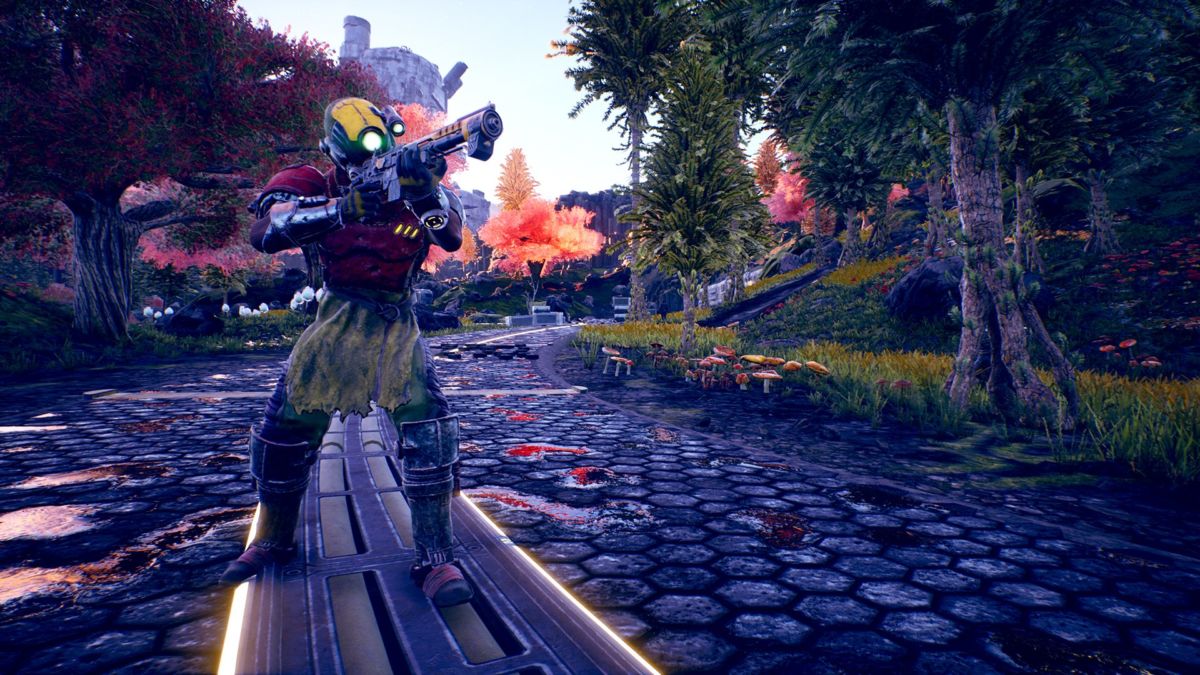
When you trigger tactical time dilation (TTD), you are given a brief window of insight regarding how you can engage with an enemy encounter. If you desire a more stealthy approach, TTD will provide tactical guidance and recommend a route it predicts to be the most effective, while also offering a strategy for more melee-based play styles. For the kill-first-ask-questions-later type, TTD can also be accessed right in the middle of a frenzied fight, but it has limited use and requires time to recharge before it can be accessed again.
The TTD is a promising new concept for what will hopefully become a future franchise, expanding on the scope of combat as you find yourself attempting an approach you would never have otherwise considered.
While The Outer Worlds certainly draws parallels to its post-apocalyptic kin, Fallout, neither game should really be compared with the other–and these aforementioned differences in features are the reason why. Whether or not this highly anticipated newcomer will deliver the polished RPG we’ve been looking for, there’s a good chance that it may stand strong in the ever-demanding market of AAA titles.
READ NEXT: 20 Best RPGs You Should Play
Some of the coverage you find on Cultured Vultures contains affiliate links, which provide us with small commissions based on purchases made from visiting our site.

